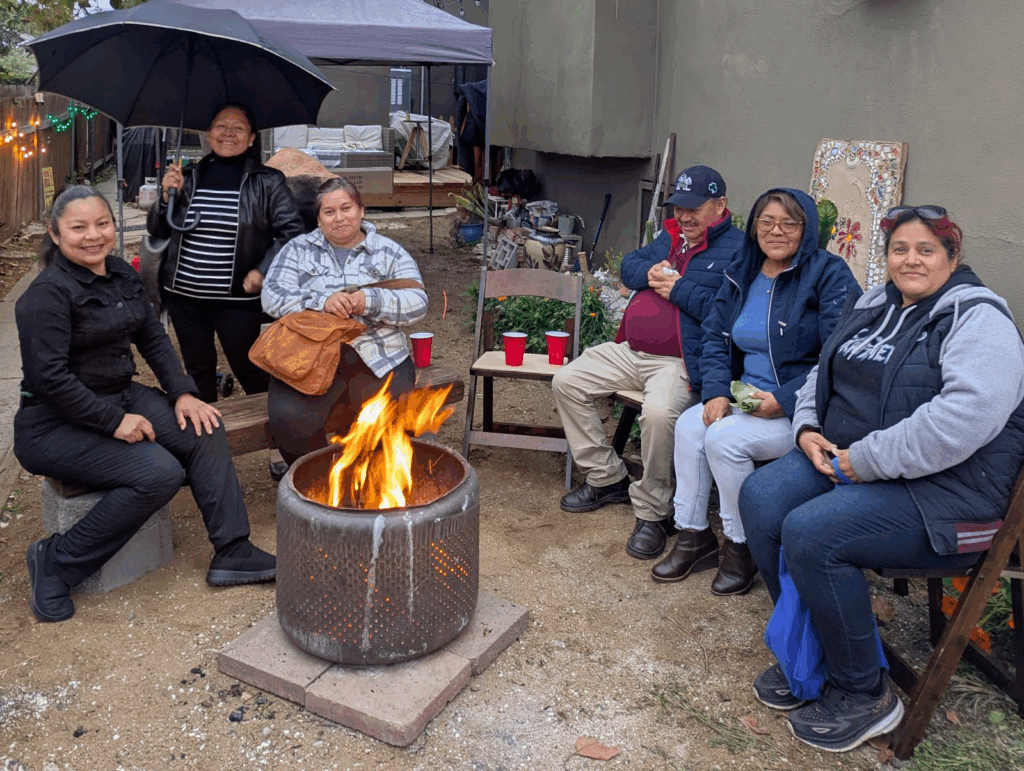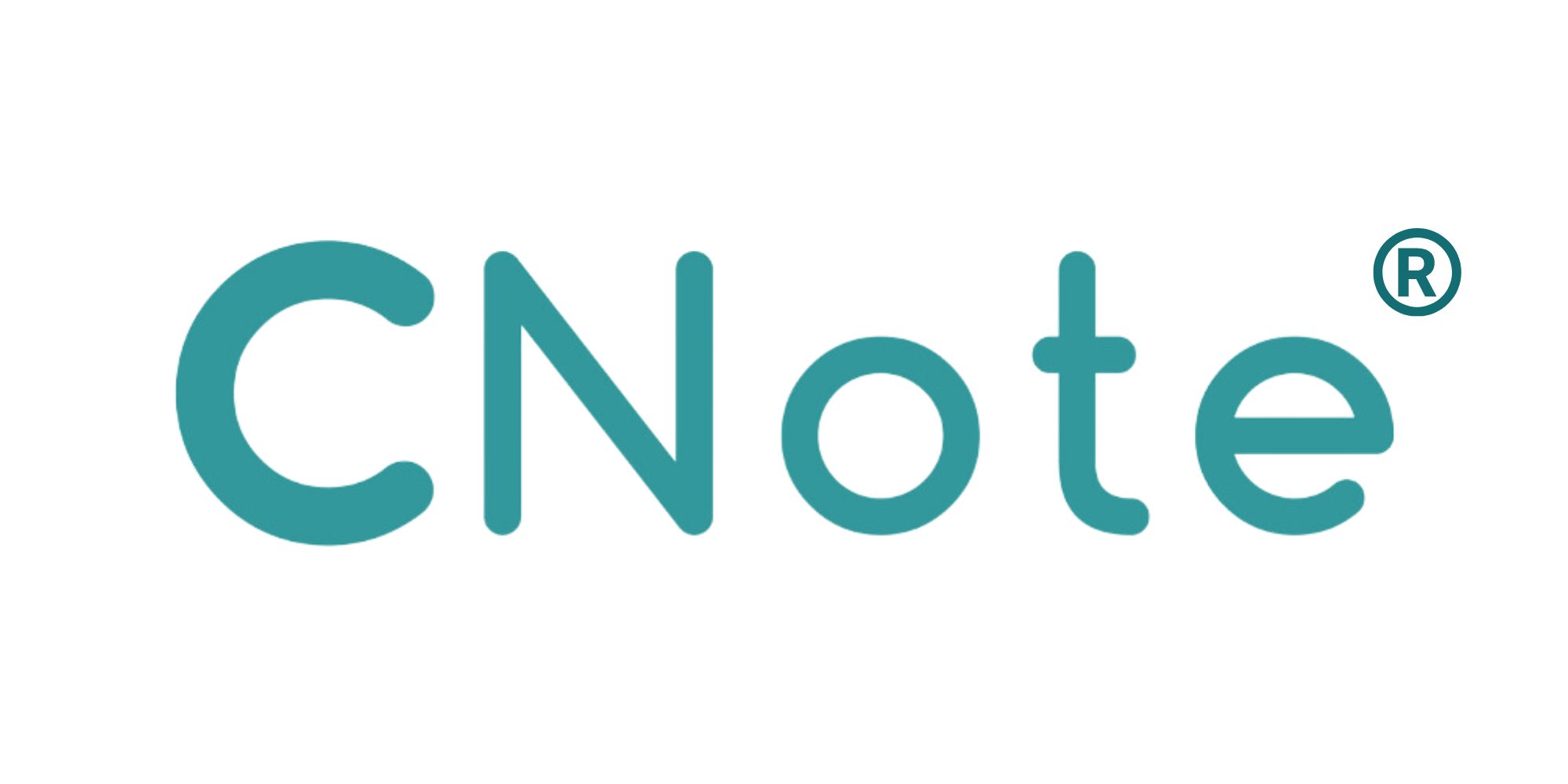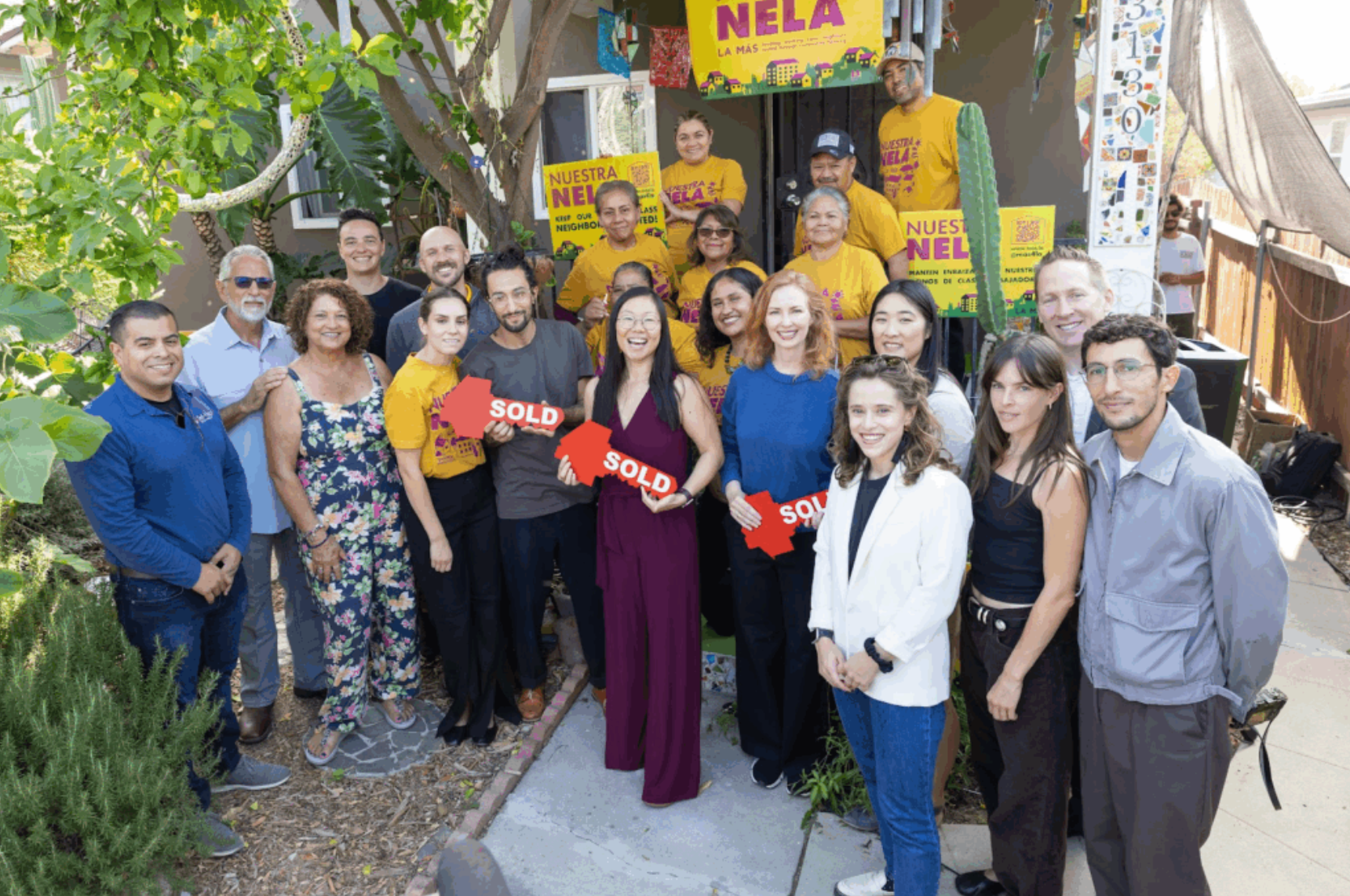America is losing affordable housing at an alarming rate. Every day, naturally occurring affordable housing—existing properties with below-market rents—disappears as gentrification drives up property values and displaces long-time residents. In Northeast Los Angeles, this crisis is playing out in real time, with rising rents pushing out families who built their lives in communities they can no longer afford.
But on a small residential property on Arvia Street, a different story is unfolding—one that demonstrates the power of partnership between community development financial institutions (CDFIs) and grassroots nonprofits in preserving affordable housing.
When Rufina Cortes, the matriarch of a family that had owned and managed the five-unit Arvia Street property for three generations, passed away, her grandson Andrés Cortes faced a crossroads that thousands of property owners confront daily. Developers were calling constantly, eager to replace the existing naturally occurring affordable housing with market-rate units that could maximize rental income. For many property owners in rapidly gentrifying areas, selling to the highest bidder would have been the obvious choice.
But Andrés had a different vision—one rooted in community preservation rather than displacement.

Celebrating the closing at Arvia with family, residents and stakeholders. Andrés Cortes, center, with LA Más Executive Director, Helen Leung (both holding “SOLD” signs).
Photo Credit: Javier De Leon.
The CDFI-Nonprofit Partnership Model
This is where the unique partnership between a Community Development Financial Institution and a grassroots nonprofit proved essential. Enter Self-Help Ventures Fund (SHVF), a member of the Self-Help family of nonprofit organizations which includes Self-Help Credit Union, a CNote Impact Cash® partner with decades of experience in community development finance, and LA Más, a nonprofit founded in 2012 specifically to support and protect affordable housing in Northeast Los Angeles.
The CDFI-nonprofit partnership model exemplifies how different organizations can leverage their complementary strengths to preserve naturally occurring affordable housing. While Self-Help brought the financial capacity and real estate expertise needed for acquisition, LA Más contributed something equally crucial: deep community roots, local organizing experience, and the trust of residents who had seen too many well-intentioned projects fail to meaningfully involve the people they claimed to serve.
“We share the vision detailed on the LA Más website: a NELA that has options for working-class residents to stay in the communities they love and call home,” explains the Self-Help team. This alignment of values made the partnership natural, but it was the combination of Self-Help’s capital deployment capabilities and LA Más’s community organizing expertise that made it powerful.
The Arvia project became a joint venture, with Self-Help and LA Más co-owning the rent-stabilized property through a shared LLC structure. Self-Help provided the patient, low-cost capital that made the acquisition possible, while LA Más ensured that community voice remained central to every decision. This division of labor—financial institution providing capital, nonprofit ensuring community accountability—represents a replicable model for affordable housing preservation nationwide.
More Than Just Preservation
The project’s impact extends far beyond simply maintaining the status quo. By preventing displacement, the partnership is maintaining affordable rents for long-term tenants, helping them remain in their community despite mounting housing pressures throughout the region.
For the Cortes family, the sale enabled something equally important: the transfer of generational wealth to a mission-aligned buyer rather than a speculative investor. This meant Andrés could honor his family’s legacy while ensuring the property would continue serving the community his grandparents helped build.
“I’m so grateful and excited that I can continue calling this place home and share in community with my neighbors,” Andrés shared after the closing. “I know mis abuelos would be happy to hear that their legacy is being honored and cared for—residents here will continue to have access to affordable housing and live in peace.”
Community-Led Decision Making
What distinguishes successful CDFI-nonprofit partnerships is their commitment to genuine community engagement—and the Arvia project exemplifies this approach. Rather than making decisions in boardrooms, the partnership prioritized ongoing tenant engagement as a fundamental component of the LLC structure itself. Arvia residents and community stakeholders met regularly with both Self-Help and LA Más representatives to ensure that planned improvements aligned with community priorities.
This process reflects a crucial distinction between traditional real estate investment and community development finance. Where conventional investors might prioritize speed and efficiency, the Self-Help-LA Más partnership invested time in building relationships and incorporating resident feedback. LA Más’s role as the community-facing partner was essential here—residents could trust that their voices would be heard because they were engaging with an organization that had spent over a decade building credibility in Northeast LA.
The nonprofit’s organizing experience proved invaluable in navigating the complex dynamics of tenant engagement. LA Más understood how to facilitate conversations that honored both immediate resident concerns and long-term community stability. Self-Help, meanwhile, could focus on the financial structuring and regulatory compliance that made the preservation possible.
After the closing, the partnership hosted a celebratory “Convivio” on the property—a community gathering that embodied the collaborative spirit behind the project’s success.
Financial Innovation Meets Community Organizing
The Arvia project’s financial structure demonstrates how CDFIs and nonprofits can collaborate to create innovative preservation models. Self-Help’s role is intentionally temporary—the plan calls for LA Más to assume full ownership once the property is stabilized. This transition strategy accomplishes multiple goals: it provides Self-Help’s capital with an exit strategy, ensures long-term community control through the nonprofit, and creates a replicable model for other CDFI-nonprofit partnerships.
The partnership is also constructing an Accessory Dwelling Unit (ADU) as part of their preservation strategy. The ADU will generate additional revenue that supports the acquisition debt service and funds critical deferred maintenance—a common challenge with naturally occurring affordable housing. More importantly, the ADU adds another affordable unit to the neighborhood housing stock, demonstrating how preservation projects can also contribute to supply.
This financial innovation required both Self-Help’s real estate development expertise and LA Más’s deep understanding of local zoning and community dynamics. The nonprofit’s advocacy work had given them insights into ADU regulations and neighborhood concerns that proved essential to the project’s success.
“This is a huge milestone for LA Más and our community,” says Helen Leung, Executive Director of LA Más. “This project shows that by working together, we can keep our neighbors rooted here and preserve affordable housing even in a market under intense pressure.”

After the closing, the Arvia team hosted a celebratory “Convivio” on the property. Photo credit: LA Más.
Scaling the CDFI-Nonprofit Model
At first glance, the Arvia Street project might seem small against the backdrop of Los Angeles’ massive affordable housing crisis. Five units represent a tiny fraction of the housing at stake across the region. But this perspective misses the project’s true significance as a scalable model for CDFI-nonprofit collaboration in preserving naturally occurring affordable housing.
The partnership structure addresses a persistent challenge in affordable housing preservation: nonprofits often lack the capital capacity to move quickly when preservation opportunities arise, while CDFIs may lack the deep community relationships necessary for successful tenant engagement. By combining Self-Help’s financial resources with LA Más’s organizing expertise, the partnership could respond to the Arvia opportunity at market speed while maintaining community accountability.
This model is particularly relevant for naturally occurring affordable housing preservation, which often requires rapid response to prevent loss to speculation. The CDFI-nonprofit partnership enables quick capital deployment while ensuring that community voice remains central to decision-making—a combination that traditional affordable housing development often struggles to achieve.
The CNote Impact Cash® Connection
Self-Help’s participation in the CNote Impact Cash® network enables partnerships like Arvia by providing access to mission-aligned capital from institutional investors. When investors deploy Impact Cash® through CNote, they’re not just earning returns on their cash allocations—they’re supporting community development financial institutions like Self-Help that can respond quickly to preservation opportunities.
This capital deployment model allows CDFIs to move at the speed of the market while maintaining their community focus. Without access to flexible, patient capital, opportunities like Arvia might be lost to speculative investors who prioritize short-term returns over long-term community stability.
Learn more about Impact Cash here
A Model for the Future
The success of the Arvia project offers hope for communities facing similar pressures across the country. It demonstrates that with the right partnerships, appropriate capital, and genuine community engagement, it’s possible to preserve affordability and prevent displacement even in rapidly changing markets.
Self-Help works to develop exactly these kinds of flexible, mission-aligned partnerships—creative capital deployments that support community-led housing solutions. Through their participation in the CNote Impact Cash® network, institutional investors can support this work while earning competitive returns on their cash allocations.
The Arvia Street property stands as more than just preserved affordable housing. It represents a different way forward—one where community preservation takes priority, where generational wealth can be transferred responsibly, and where residents can continue calling home the neighborhoods they’ve helped build.
In a city where displacement has become all too common, the Arvia project proves that another path is possible.


